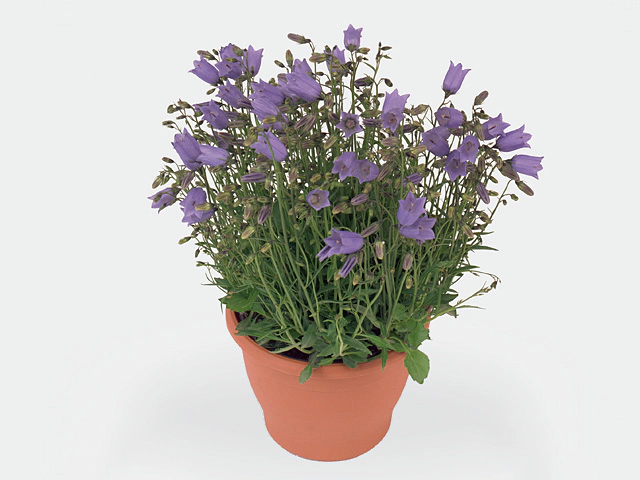Campanula cochleariifolia

| Leaf base | Cordate (heart-shaped) |
| Leaf margin | Serrate |
| Leaf type | Foliage leaf |
| Winter hardness | Good (USDA-zone 5, 6) |
| Flower color | Blue; Blue-medium violet blue-092A |
| Soil fertility | No poor soils |
| Leaf, general shape | Ovate (egg-shaped) |
| Plant height | 10 - 20 cm |
| Inflorescence | Multi-flowered |
| Flowering month(s) | June; July; August |
| Structure (tissues) | Herbaceous |
| Leaf surface | Glossy |
| soil pH requirement | Alkaline (pH > 7,5); Neutral (pH 6,5 - 7,5) |
| Light conditions | Sunny; Semi-shades |
| Leaf division | Simple |
| Plant structure/crown structure | Compact; Very compact |
| Toxicity (if consumed) | Not or barely |
| Moisture requirements | Well-drained |
Campanula cochleariifolia, commonly known as Bellflower, is a beautiful plant that offers a burst of vibrant blue flowers during the summer months. This compact, herbaceous perennial is a popular choice for gardeners who are looking to add color and charm to their outdoor spaces.
One notable feature of the Bellflower is its heart-shaped leaves. The leaf base is cordate, giving it a distinct and attractive appearance. The leaf margin is serrate, with small teeth along the edges, adding texture to the overall foliage. The leaves are ovate in shape, resembling an egg, and have a glossy surface, giving them a shiny, healthy look.
In terms of size, the Bellflower typically grows to a height of 10 to 20 cm, making it ideal for planting in borders or rock gardens. Its compact structure and crown structure make it easy to integrate into various garden designs. Whether placed in sunny areas or semi-shaded spots, the Bellflower thrives in both light conditions.
When it comes to flowering, the Bellflower does not disappoint. It produces multi-flowered inflorescences, with each small flower showcasing a stunning blue color. The flower color can range from a medium violet blue to a deeper blue shade, adding a touch of elegance to any garden.
One key advantage of the Bellflower is its hardiness. It is well-suited for USDA zones 5 and 6, meaning it can withstand cold winters without much difficulty. This makes it a reliable choice for gardeners in regions with cooler climates.
In terms of soil fertility, the Bellflower prefers well-drained soil and does not thrive in poor soils. It benefits from soil with a neutral pH level (6.5 - 7.5) and can also tolerate slightly alkaline conditions (pH above 7.5).
Another noteworthy characteristic of the Bellflower is its non-toxic nature. While it is always important to exercise caution around plants, especially if you have pets or small children, the Bellflower poses little to no risk if consumed.
Overall, the Bellflower is a delightful plant that brings beauty and charm to any garden. With its heart-shaped leaves, vibrant blue flowers, and compact structure, it is a true gem. Whether you're looking to add color to borders or create a stunning rock garden, the Bellflower is a versatile choice that will thrive in various light conditions and soil types. Enjoy the beauty of this herbaceous perennial and watch as it brightens up your outdoor space throughout the summer months.
Market availability index by month:
| Jan. | Feb. | Mar. | Apr. | May | Jun. | Jul. | Aug. | Sep. | Oct. | Nov. | Dec. |
|---|---|---|---|---|---|---|---|---|---|---|---|
| 1 | 2 | 3 | 3 | 4 | 3 | 3 | 2 | 1 | 1 | 1 | 1 |